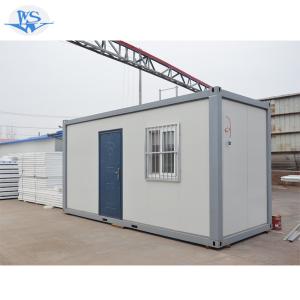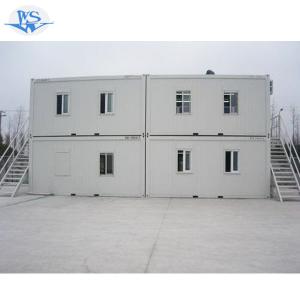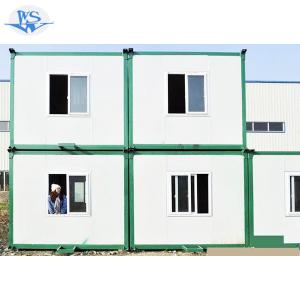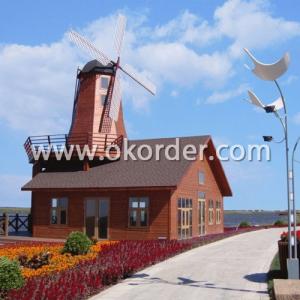Best portable container houses for sale
- Loading Port:
- Tianjin
- Payment Terms:
- TT OR LC
- Min Order Qty:
- -
- Supply Capability:
- 1000 pc/month
OKorder Service Pledge
OKorder Financial Service
You Might Also Like
CNBM PRODUCTION BASE--Container House

Specification ofcontainer
Size | 5950*2310*2650 |
Roof | Outer color plate+50mm glass wool insulation+ steel frame+ colorful steel ceiling |
Wall panel | 75mm EPS or rock wool composite panels |
Floor | Steel frame+15mm wood vinyl sheet+50mm glass wool insulation+ Color plates waterproof floor |
Door | Special steel doors, security locks, 800*2100mm |
Window | PVC sliding window, with screen window, 960*1000mm |
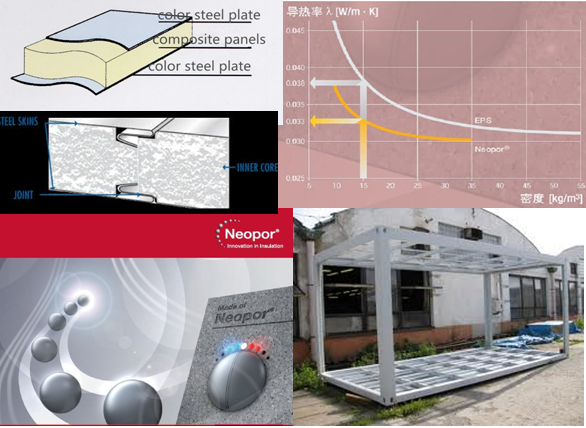
Layout of Container
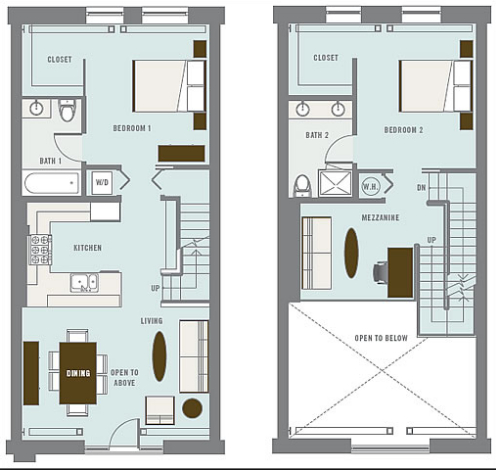
Packing thecontainer
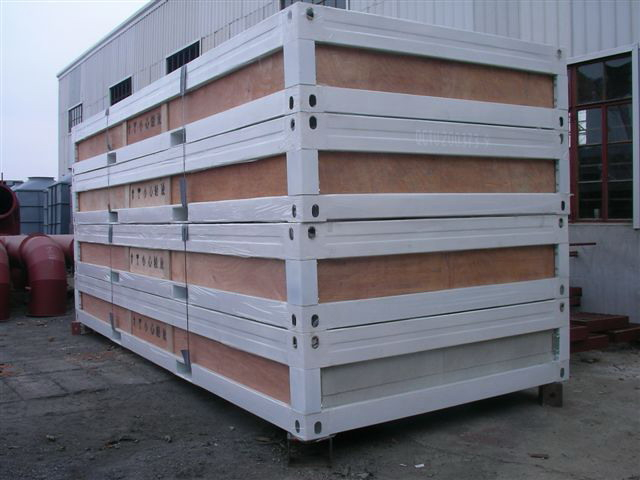
Assembly Process:
Easyto be Assemble and disassemble. Four workers can complete one unit in half day
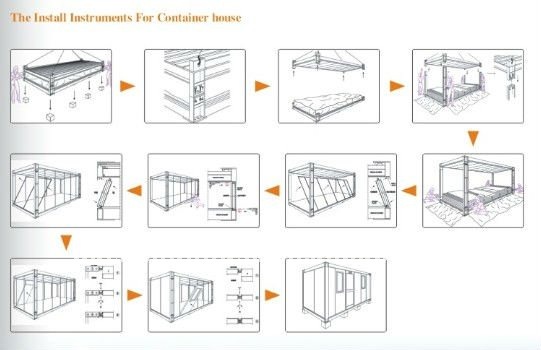
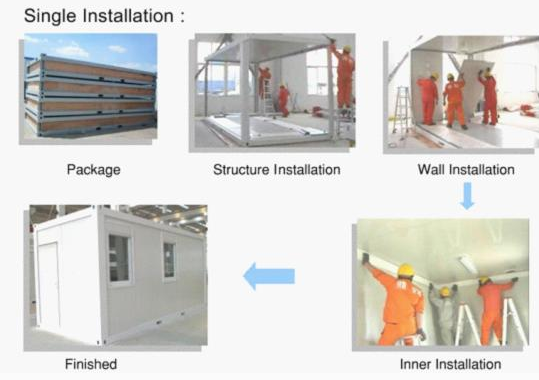
Packing and Transportation:
From our factory to overseas client, there are two ways todelivery the houses. If your port can accept SOC (Shipper’s Owned Container), 4standard cabins can be packed as a 20ft container and shipped naked. If cannot,7standard cabins can be loaded into one 40ft HC.
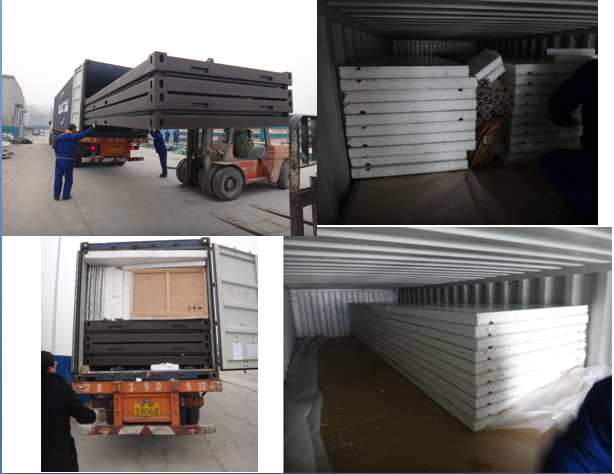
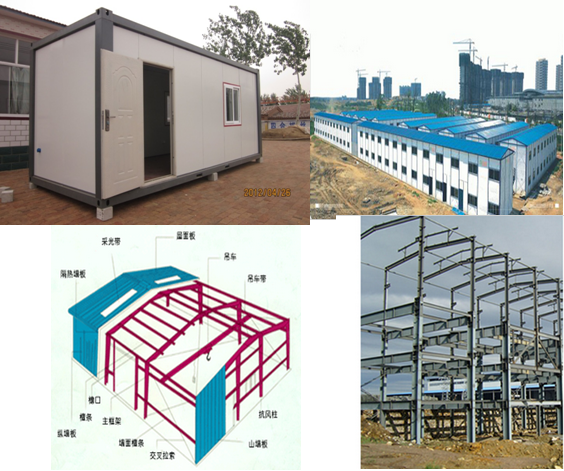
Why choose us
Different types ofhouse we can supply
Our factory
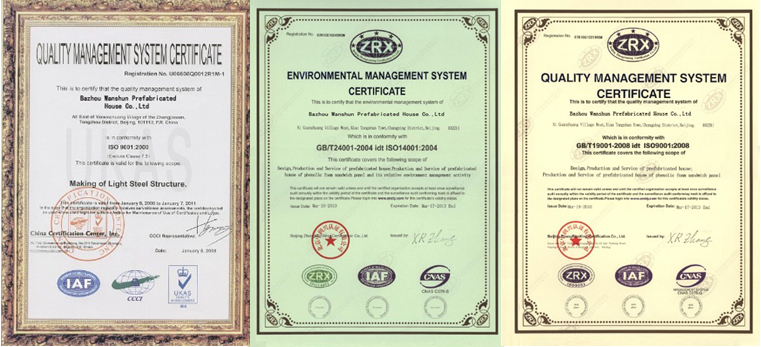
Our team or clients
- Q:Are container houses fire-resistant?
- Fire resistance can be achieved in container houses, but it relies on the materials chosen for construction. The steel structure of shipping containers inherently offers some level of fire resistance since steel is not combustible. However, the overall fire resistance of the container house is determined by the finishes applied both inside and outside, including insulation, cladding, and roofing. To enhance fire resistance, fire-resistant materials like mineral wool insulation can be used during construction. Mineral wool has a high resistance to fire, making it an ideal choice. Additionally, fire-resistant cladding materials such as cement fiberboard or metal panels can be utilized to further safeguard the container house against fire hazards. Fire-resistant roofing materials like metal or concrete can also be employed to minimize the risk of fire spreading through the roof. It is important to emphasize that adherence to building codes and regulations is crucial when constructing fire-resistant container houses. This ensures that proper fire safety measures are implemented, such as the installation of fire alarms, smoke detectors, fire extinguishers, and adequate escape routes. In conclusion, by using appropriate materials and following fire safety standards, container houses can indeed be made fire-resistant, thus providing a safer living environment for their occupants.
- Q:How durable are container houses?
- Container houses are renowned for their durability and strength, as they are constructed using corten steel, a material known for its resilience and resistance to corrosion. This steel is specifically designed to endure harsh weather conditions, which makes it ideal for container housing. Moreover, container houses are engineered to withstand transportation and stacking. They are designed to be stacked up to nine containers high, showcasing their ability to handle substantial weight and pressure. Furthermore, container houses are built to have a long lifespan. With proper maintenance and care, these structures can last for 25 to 30 years, or even longer. The steel frames are resistant to pests, mold, and fire, further enhancing their durability. When it comes to structural integrity, container houses can endure strong winds and even earthquakes. Their solid steel structure provides stability and strength, ensuring the safety of those inside. However, it is important to acknowledge that the durability of container houses can vary depending on the construction methods and quality of materials. Proper insulation, sealing, and regular maintenance are crucial to guarantee longevity and prevent potential issues. In conclusion, container houses are exceptionally durable structures. With their robust steel frames and resistance to various environmental factors, these houses can withstand the test of time and provide a secure and safe living space for their occupants.
- Q:Can container houses be connected to municipal utilities?
- Container houses have the capability to be connected to municipal utilities, indeed. Despite being typically constructed from repurposed shipping containers, they can still be equipped with the essential infrastructure required for linking to municipal utilities such as water, electricity, and sewer systems. The process of connecting a container house to these utilities may necessitate some extra planning and modifications, but it is certainly feasible. Numerous container house designs include plumbing and electrical systems that can be interconnected with the local water and power grids. Moreover, container houses can be outfitted with septic tanks or be linked to the municipal sewer lines for proper waste disposal. It is crucial to consult with local authorities and utility providers to ensure that all mandatory permits and regulations are adhered to when connecting a container house to municipal utilities.
- Q:Can container houses be insulated for temperature control?
- Indeed, it is possible to insulate container houses for the purpose of temperature control. Insulation plays a vital role in the design of container houses as it helps to regulate the internal temperature and establish a pleasant living environment. Container houses offer various insulation options, such as spray foam insulation, fiberglass insulation, and rigid foam insulation. These materials can be applied to the container's walls, floors, and ceilings to create a protective barrier against fluctuations in external temperatures. Moreover, insulation aids in reducing energy consumption by minimizing heat transfer, resulting in decreased expenses for heating and cooling. By implementing proper insulation techniques, container houses can attain thermal efficiency and provide comfort in any climate.
- Q:Are container houses customizable?
- Indeed, container houses offer a wide range of customization possibilities. One of the main benefits of these houses lies in their versatility and adaptability to different design preferences and needs. Whether it involves a single container or a combination of multiple containers to form a larger living area, these houses can be easily modified and tailored to suit individual preferences. The options for customizing container houses are vast. They can be designed with an array of features, including windows, doors, skylights, or even balconies. The interior layout can be adjusted to accommodate various room arrangements, such as bedrooms, bathrooms, kitchens, and living spaces. Moreover, container houses can be customized with insulation and heating systems to ensure a comfortable living environment. In terms of aesthetics, container houses can also be personalized. They can be painted in different colors, adorned with various cladding materials, or embellished with plants, artwork, or other individualized touches. The exterior design can be altered to create a distinctive and visually appealing appearance. Additionally, container houses offer easy expansion or modification as required. Additional containers can be added or removed, allowing for flexibility in size and layout. This makes container houses particularly suitable for individuals who may need to adjust their living space over time. In summary, the customizable nature of container houses grants individuals the freedom to create a one-of-a-kind and personalized living space that reflects their style and fulfills their specific requirements.
- Q:Can container houses be customized to fit individual preferences?
- Certainly, container houses can be customized to suit individual preferences without a doubt. The flexibility offered by constructing a home using shipping containers is one of its key advantages in terms of design and customization. Due to the modular nature of containers, they can be easily modified to cater to specific preferences, needs, and requirements. There are various ways in which container houses can be customized. Firstly, the interior layout can be tailored to fit individual preferences. Containers can be combined or stacked to create multiple levels or open spaces. Rooms or open-concept living areas can be created by adding or removing walls. Moreover, the placement of windows, doors, and other openings can be customized to maximize natural light and scenic views. Secondly, container houses can be customized in terms of aesthetics. The desired look can be achieved by painting or cladding the exterior of the containers with different materials. This allows for a wide range of design options, ranging from modern and minimalist to rustic and industrial. Furthermore, a personalized and unique living space can be created by using various finishes, colors, and materials for the interior. In addition, container houses offer flexibility when it comes to incorporating additional features and amenities. For example, individuals can choose to include solar panels for sustainable energy, incorporate a green roof for improved insulation and environmental benefits, or install smart home technology for convenience and efficiency. In summary, container houses present numerous opportunities for customization. They can be adapted to suit individual preferences in terms of layout, design, and additional features. Whether someone desires a contemporary, traditional, or unconventional style, container houses allow for the creation of a personalized living space that aligns with individual tastes and requirements.
- Q:Are container houses suitable for areas with extreme weather conditions?
- Container houses can be suitable for areas with extreme weather conditions, but it largely depends on how they are designed and constructed. With proper insulation and reinforcement, container houses can withstand extreme heat, cold, wind, and even seismic activity. One key advantage of container houses is their structural strength. Shipping containers are built to withstand harsh conditions during transportation, including storms and rough seas. This inherent strength makes them a good choice for areas prone to hurricanes, tornadoes, or heavy snow loads. By reinforcing the container with additional steel supports, it can further enhance its ability to withstand extreme weather conditions. Insulation is another crucial factor in making container houses suitable for extreme weather. Proper insulation helps regulate the internal temperature, keeping the interior cool in hot climates and warm in cold climates. This can be achieved through various insulation materials, such as spray foam, rigid foam boards, or fiberglass batts. Additionally, double-glazed windows and energy-efficient doors can contribute to better insulation and energy savings. Furthermore, container houses can be designed with features that mitigate the impact of extreme weather. For example, sloped roofs can help shed snow or rainwater more effectively, preventing excessive weight or leakage. Installing hurricane shutters or impact-resistant windows can protect against high winds and flying debris. Additionally, incorporating passive design principles, like strategic placement of windows for natural light and ventilation, can help reduce reliance on mechanical heating or cooling systems. However, it is important to note that container houses still require proper planning, engineering, and professional construction to ensure their suitability for extreme weather conditions. Local building codes and regulations should be followed, and consultation with experts in container house construction is highly recommended. With the right design, materials, and construction techniques, container houses can indeed be a viable option for areas with extreme weather conditions.
- Q:Can container houses be designed with wheelchair accessibility?
- Yes, container houses can be designed with wheelchair accessibility. With careful planning and design considerations, container houses can be modified to accommodate wheelchair users. Modifications can include the installation of ramps, wider doorways, accessible bathrooms, and other features that ensure easy maneuverability and accessibility throughout the house.
- Q:Do container houses require building permits?
- Yes, container houses generally require building permits. Building codes and regulations vary depending on the location and jurisdiction, but in most cases, container houses are considered permanent structures and therefore require proper permits. These permits ensure that the construction of the container house meets safety standards, zoning requirements, and other applicable regulations. It is important to research and consult with local authorities or a professional architect or builder to determine the specific requirements and regulations for container house construction in your area.
- Q:Can container houses be designed to have open floor plans?
- Certainly, open floor plans can indeed be incorporated into the design of container houses. The modular nature of these houses allows for flexibility in layout and design, thereby enabling the creation of spacious and open living areas. By strategically placing and removing interior walls, container houses can be customized to have open floor plans that optimize space and establish a seamless flow between different areas like the living room, kitchen, and dining area. Moreover, the design can incorporate large windows and glass doors to invite abundant natural light, thus further enhancing the sense of openness and airiness within the space. Container houses provide limitless possibilities for open floor plans, which is why they are highly favored by individuals who appreciate a contemporary and uncluttered living environment.
1. Manufacturer Overview |
|
|---|---|
| Location | |
| Year Established | |
| Annual Output Value | |
| Main Markets | |
| Company Certifications | |
2. Manufacturer Certificates |
|
|---|---|
| a) Certification Name | |
| Range | |
| Reference | |
| Validity Period | |
3. Manufacturer Capability |
|
|---|---|
| a)Trade Capacity | |
| Nearest Port | |
| Export Percentage | |
| No.of Employees in Trade Department | |
| Language Spoken: | |
| b)Factory Information | |
| Factory Size: | |
| No. of Production Lines | |
| Contract Manufacturing | |
| Product Price Range | |
Send your message to us
Best portable container houses for sale
- Loading Port:
- Tianjin
- Payment Terms:
- TT OR LC
- Min Order Qty:
- -
- Supply Capability:
- 1000 pc/month
OKorder Service Pledge
OKorder Financial Service
Similar products
New products
Hot products
Hot Searches
Related keywords
